Mosaics of Experience
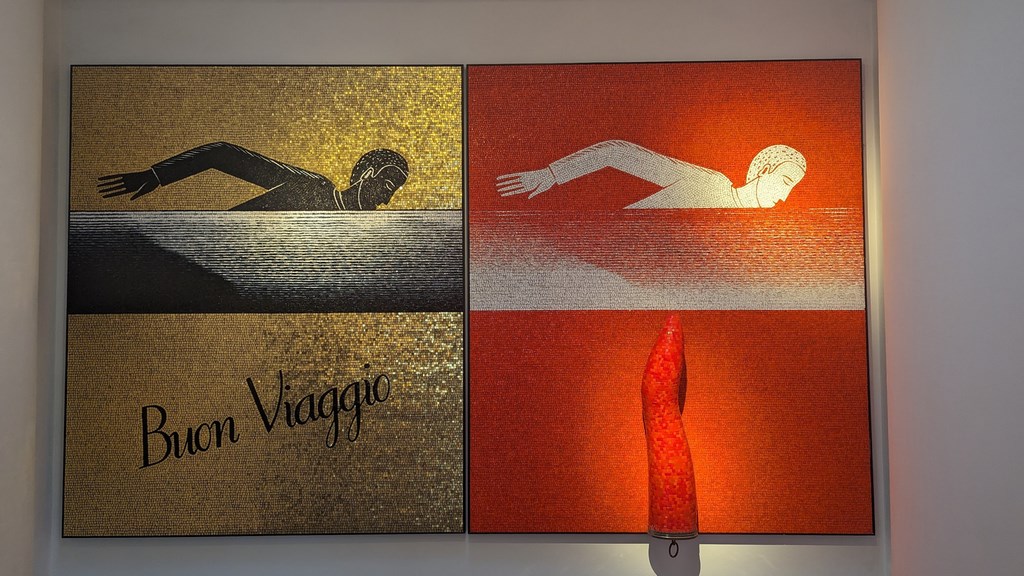

What started out as an Italy trip devoted to the pursuit of fine food and wine, Lea and George Frederick, wound up deeply imbibing in the world of mosaic art at a remarkable facility in Vincenza. Here they share a slice of travelogue and images that point to the remarkable possibilities of artistically arranged bits of glass tile.
By Lea and George Frederick
It’s true that sometimes you don’t know where you’re going until you get there. That was the case with a trip to Italy we took recently. It started out focused on the pursuit of fine dining and wine, but ended up being as much, or even more, about the dazzling world of tile mosaics, both old and new.
We were part of a group of 14 exploring Northern Italy engaged in various culinary pursuits. Our 10-day excursion included stays in Milan, Alba, Trieste and Verona. Our adventure did not disappoint. Along the way, we had some of the best meals we’ve ever experienced, which were typically paired with equally exquisite wines.
It was a great trip in all respects. We had a perfect balance of planned activities and meals, and plenty of free time to explore these remarkable historic cities. We’re both travel enthusiasts and have always seen the value in exploring new places. It’s great from a personal standpoint, making memories that you can enjoy for the rest of your life; and, travel fuels design creativity in our professional lives, as well.
For example, George is practically obsessed with drains, and especially how they can be used to make artistic statements. As it turns out, Italy is a treasure trove of creative drain designs, as well as other utilitarian aquatic conveniences from gutters to aqueducts to fountains. Functional details we take for granted in the U.S., like drains, take on all sorts of design iterations in the hands of Italian designers and artisans.
That’s just one small example. Italy is like a design laboratory, with the work of artists and master craftsmen throughout the ages on full display almost everywhere you turn.
WINE AN BEYOND
As we were planning the trip, a good friend of ours, industry icon Paolo Benedetti pointed out that Verona is only 30 minutes from Vincenza, the location of the internationally renowned Bisazza Foundation. He had been there several years earlier when the tile was actually manufactured there.
Since then, the company has moved its manufacturing operation to Tunisia, but has transformed the Vincenza property into a truly remarkable gallery displaying a vast spectrum of tile mosaic.
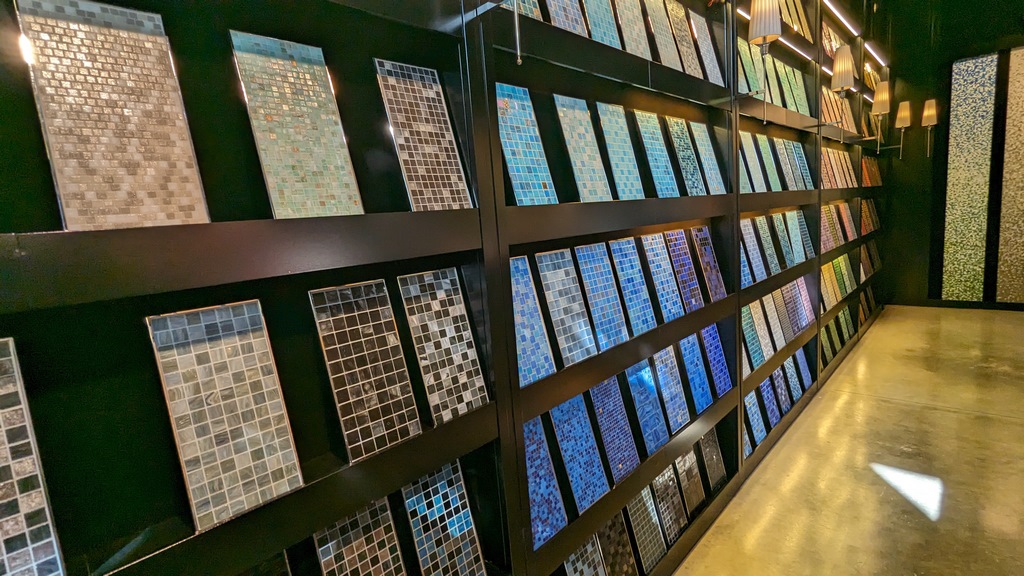
Bisazza makes beautiful glass tile that has gained popularity in the U.S. One of the applications where we often see the material is in high-end watershapes, as well as kitchens and bathrooms. For us, visiting the Foundation was a revelation largely because we haven’t explored the world of mosaics in our work, at least not to any great extent.
We’ve resisted glass tile because it’s notoriously difficult to install, largely because the backing surface of the tile is visible through the transparent material. There are few installers in the U.S. that we would trust with such an expensive and demanding material. Seeing the installations at the Bisazza Institute, and indeed the mosaics throughout Italy, makes it enticing to give the material another look.
The Bisazza Foundation is essentially a massive gallery of original artwork using glass tile mosaics as the primary visual element. The variety of concepts is stunning, some so imaginative there would be very little practical application beyond the “wow” factor, while other displays show applications that very well might find their way into our designs.
According to the Foundation’s vice-president Rossella Bisazza, “Its fascination is due to the fact of being in an environment that is almost outside reality.”
The collection features the work of leading architects and designers: luminaries such as John Pawson, Richard Meier, Ettore Sottsass, Marcel Wanders, and Jaime Hayon, all visual artists from a broad spectrum of design styles and philosophies.
RICH HISTORY
For more than 60 years, the Foundation has represented the heart and soul of the Bisazza family. Renato Bisazza founded the company in 1956 on the same site, focusing at first on cladding for building exteriors and evolving into glass tile appliques that qualify as fine art.
The building’s relatively recent transformation, completed in 2012, was orchestrated by architect Carlo Dal Bianco, who was tasked to create clean orderly spaces, while retaining elements of the building’s industrial past. Dal Bianco’s design featured the original exposed concrete floors, which still carry marks left by the old furnaces. He also installed floor-to-ceiling windows that supply the interiors with natural light.
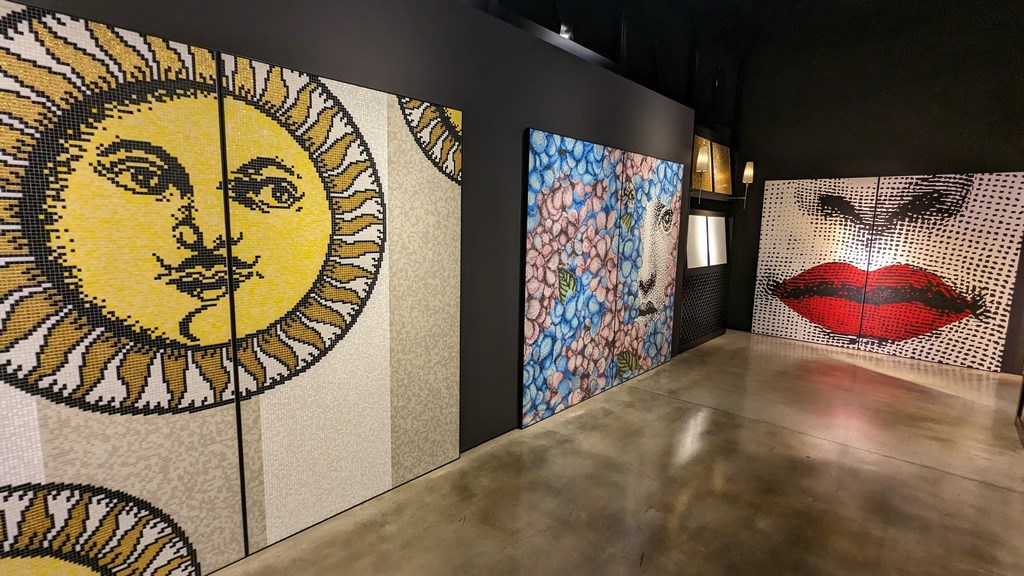
Its eleven rooms currently stretch over a vast 20,000-plus square feet.
The Foundation is more than anything an expression of the Bisazza family’s artistic passions. The genesis of the Foundation can also be traced back to Alessandro Mendini, the firm’s first creative director in 1995. During his relatively brief four-year tenure, he revolutionized both the company and the way its mosaic tiles were used. “With a 2 x 2 cm square,” he once said, “you can cover the entire surface of the world.”
Mendini not only employed the tile in his own architectural projects, such as stations for the Naples subway, the Groninger Museum in the Netherlands, and Swatch and Alessi stores; but he also collaborated with other designers, who started to create furniture, objects, and artistic installations using Bisazza’s tiny tesserae. “The goal was to step out of that closed, inward image of making pools and bathrooms,” he declared.
The policy has been firmly embraced ever since. “Collaborating with contemporary designers and architects is integral to our company,” insists Piero. “It’s a way of making our product relevant for today.”
Many of the works displayed in the Foundation were initially produced for other purposes. Fabio Novembre’s immense looping “Love Over All” was created for the Salon du Meuble in Paris in 2003; Marcel Wanders’ Ante-Lope Car debuted at London’s 100% Design Fair in 2004; and Mendini’s Proust Armchair was for an Italian design exhibition in Athens the following year. Other pieces, like Sandro Chia’s Intelligent Bathers and Novembre’s Godot, were produced for the decoration of Bisazza showrooms, in Milan and Berlin, respectively.
According to Piero, the moment it became obvious there were sufficient works to constitute an embryonic collection, the idea of the Foundation gained life.
It was inaugurated in June 2012 with both the unveiling of the permanent collection and a temporary exhibition devoted to the English architect, John Pawson. The following year, the Foundation hosted a major European retrospective of the work of Richard Meier, marking the 50th anniversary of the American architect’s practice. Both men created site-specific installations for the Foundation.
STUNNING VARIETY
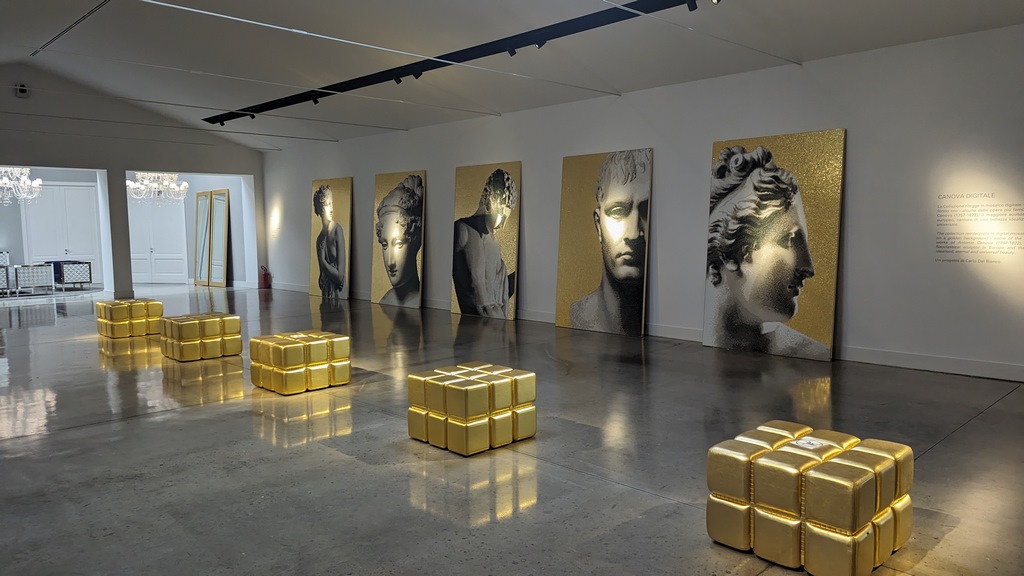
The variety on display throughout the facility is truly mind-bending. They differ in scale and size, and range stylistically from a minimalistic approach to more wildly expressive creations, such as Jaime Hayon’s Jet Set airplane (Note: Should Airplane also be capitalized?) and Studio Job’s oversized Silverware.
Although most exhibits are purely whimsical, there are also pieces that combine form and function, such as Marcel Wanders’s Pebbles coffee tables and Patricia Urquiola’s Side by Side screens.
The Foundation is very much an ongoing work in progress with shifting exhibits. A 2016 addition features a four-meter-long frieze bearing an iconic print from the archives of the legendary Florentine fashion house. The following year, a space devoted to architectural photography opened featuring an entrance that is designed like a gilded bank vault opened to the public. Inside, the treasures include images by Julius Shulman, Hiroshi Sugimoto, Candida Höfer and Gabriele Basilico, as well as a 1901 shot of a Parisian staircase by Eugène Atget.
Each display offered something different and often exciting. We were taken by a series of portraits that appear to be reflecting glare as if under extremely bright lights. In fact, the lighting effect is achieved entirely with the use of white shimmering tile. From the whimsical depiction of Pinocchio, to the purely graphic works of non-specific art, we were confronted with a spectrum of styles and modes of expression.
Note: Much of the above was based on beautifully written descriptions of the Foundation’s history and exhibits.
ENDURING POTENTIAL
As we were perusing the works at the Foundation, we were taken by the way that tile mosaics embody the values that serve as the philosophical foundation for our company — utility, beauty, and durability.
Fittingly, that great triumvirate comes from the great Roman architect Vitruvius, the inspiration for Leonardo Da Vinci’s “Vetruvian Man” and author of De Architectura, widely regarded as the first book in history on architectural theory. In it he states that all buildings should have firmitas, utilitas, and venustas (“strength”, “utility”, and “beauty”), principles reflected in much ancient Roman architecture.
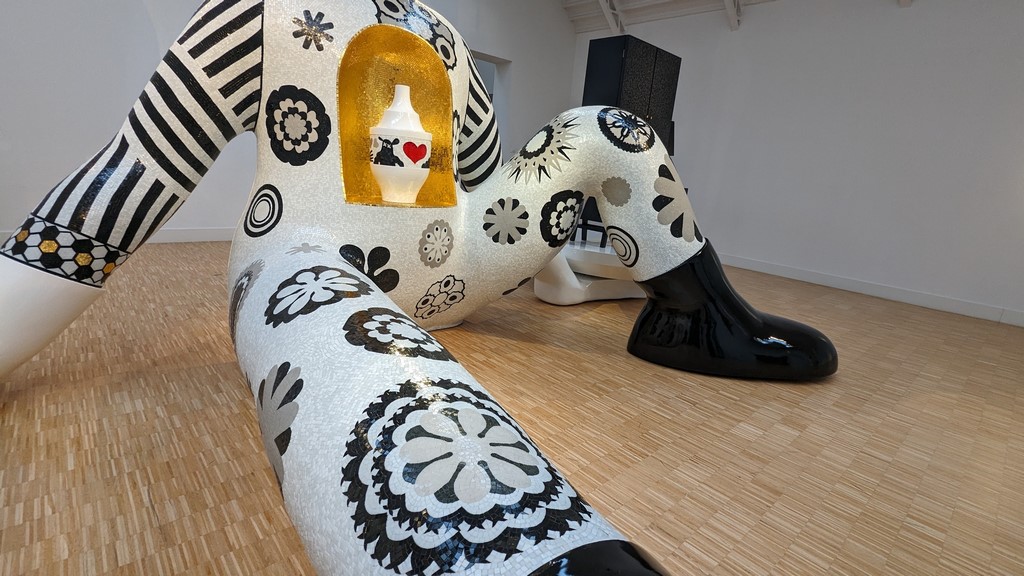
In our work creating watershapes and surrounding spaces for our clients, we strive for those three qualities. One could reasonably argue that tile mosaics are the ultimate expression of those values. They are obviously beautiful, many serve as floors that over the years are traversed by millions of pedestrians, and they last longer than any other art form other than cave paintings.
In that sense, mosaic tile art has much to offer watershapers and designers of all stripes. Works like the Bisazza Foundation can be used as a source of rich inspiration and stand as examples of what can be achieved with beautiful materials and a vivid imagination.
Lea Frederick is owner and design specialist for Vue Custom Pools in Greensboro, NC. George Frederick is the company’s general manager and is in charge of quality control. They are both members of the International Watershape Institute, instructors for Watershape University, and are widely recognized for their excellence in design and const









